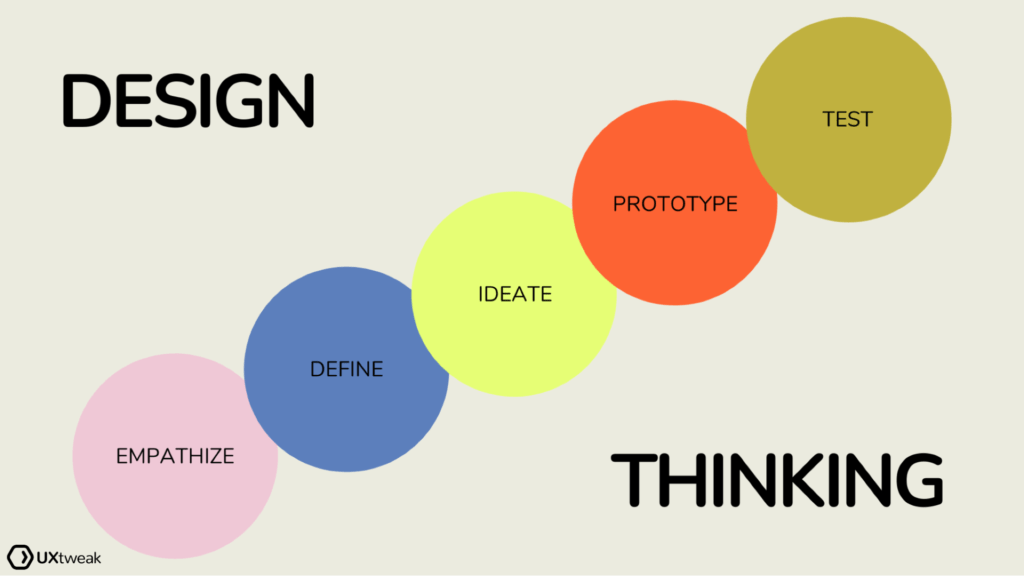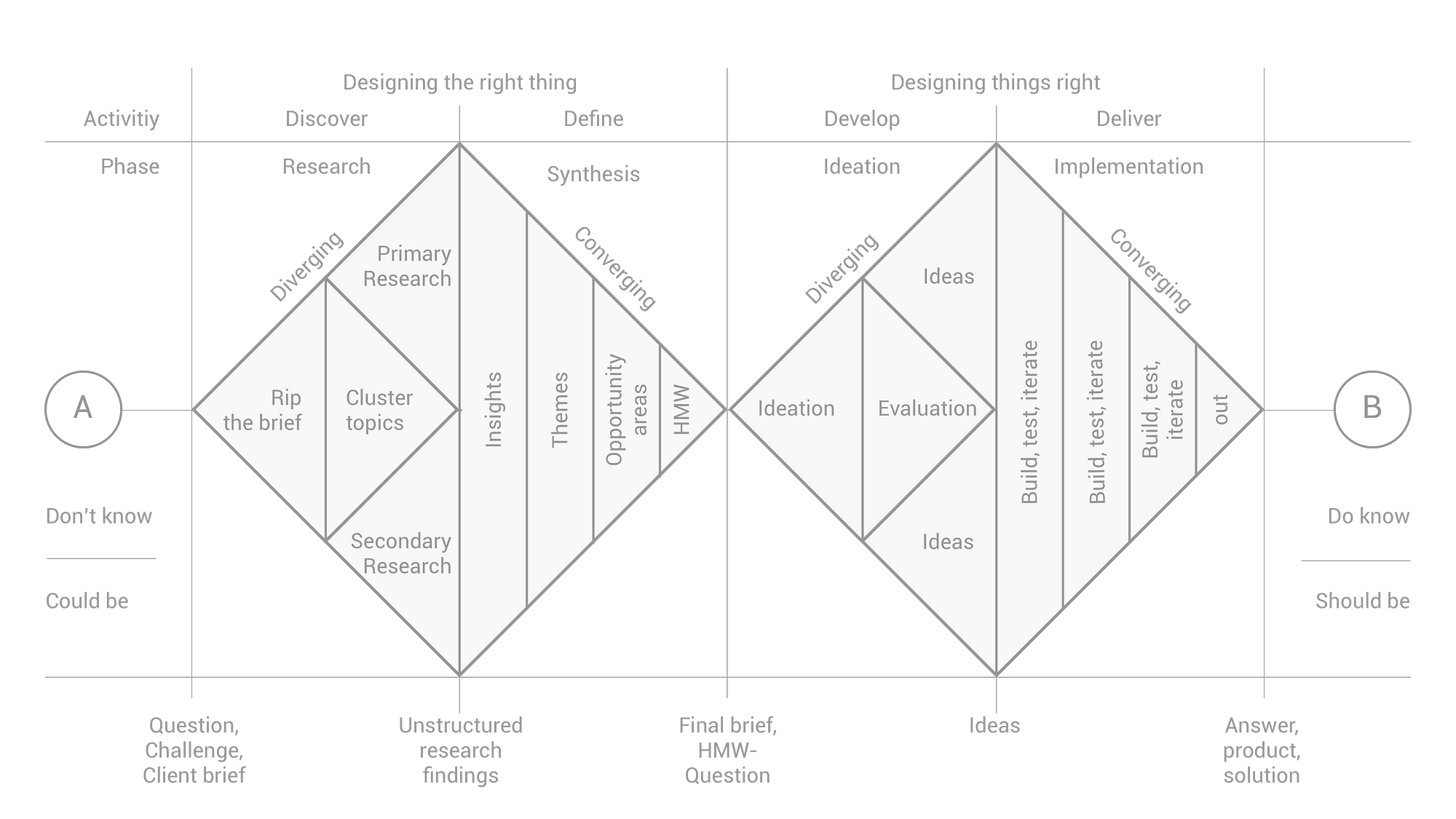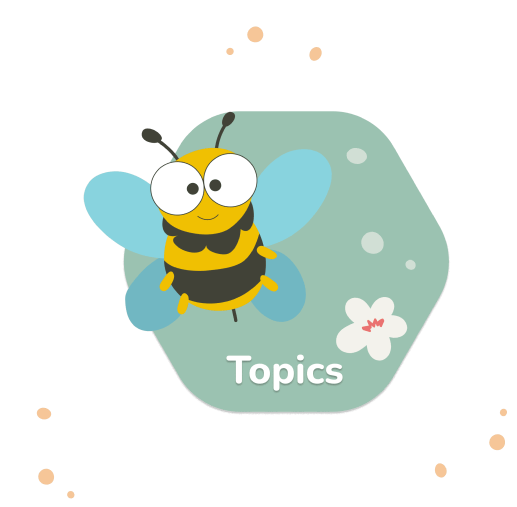Product discovery is the process full of insights and a wide range of activities that help teams collect those insights. And it can get messy. However, by choosing an effective product discovery framework to follow you’ll be able to approach your research strategically and get the most out of it.
Let’s take a look at what different frameworks there are and how they fit into the discovery process!
What is the product discovery process?
Product discovery is the process of gathering information about your future customers, uncovering their needs and pain points, and generating ideas for a new product or feature based on this information.
It involves several stages, including:
- Learning about your users
- Defining the problem
- Generating & prioritizing ideas
- Prototyping & testing
Product discovery is essential for teams that want to create products that satisfy the needs of their target audience and successfully solve their problems. It helps to remain user-centered at all stages of the design and development process, generate new innovative ideas and validate your assumptions on the go.
Product discovery frameworks
Product discovery frameworks are strategies and methodologies used by product teams to facilitate the product discovery process and uncover the most viable solutions for their users. They help to streamline the process, organize it better and reduce uncertainties around what to build.
Let’s take a look at some of the most popular product discovery frameworks and how they are applied:
Design Thinking

Design thinking is a human-centered problem-solving approach that emphasizes understanding user needs, challenging assumptions, and generating innovative solutions. This framework is focused on empathizing with users and involving members of diverse teams in the collaboration process. This is the most widely-spread approach that is familiar to and used by almost everyone in the UX design field.
Design thinking framework involves 5 main stages:
- empathize
- define
- ideate
- prototype
- test
Teams begin by understanding users through user research and defining a clear problem statement. Then they brainstorm potential solutions, prototype and test them. The process repeats until there is nothing left to fix. This framework is also often described like a mindset rather than a strict process to follow.
Double Diamond

Double Diamond is a product discovery framework developed by the British Design Council. It essentially divides the product discovery process into two main parts (diamonds): problem and solution. While the first diamond helps teams better understand the problem, the second helps to solve it.
Together, they include 4 stages:
- Discover
- Define
- Develop
- Deliver
The two diamonds represent the process of deep exploration of the problem and involve approaching it widely or divergently, which helps to come up with innovative ideas. However, at the stage of developing the solutions the framework is designed to encourage focused or convergent steps for solving the problem that users face.
The approach visually emphasizes the divergent and convergent stages of the UX design process. The emphasis here is on broadening the scope before narrowing it down, ensuring you generate a wide amount of ideas before choosing a direction.
Jobs To Be Done
Jobs To Be Done (or JTBD) is an approach based on the theory of consumer action. It suggests that consumers have specific “jobs” in their lives and they “hire” products to do those jobs. This makes the JTBD framework very different from others, as it shifts the focus from user personas and product features and rather aims to define what those “jobs” are.
This kind of thinking helps teams to better understand the reasons behind user choices and allows them to tailor the product to their specific jobs.
Let’s take a look at the example of this framework application:
Scenario: buying a drill
Traditional approach: a person is buying a drill because they want a drill.
JTBD thinking: a person doesn’t just want a drill; they want a hole in their wall.
But it doesn’t stop there.
Why does the person want a hole in the wall? Perhaps to hang a picture.
Why do they want to hang a picture? To personalize their living space and feel more at home or to preserve and display memories.
Looking at this, buying a drill becomes just one of the user’s core JTBD. Perhaps their primary goal is to display memories or make their new place feel more like home.
Understanding their true intentions helps product teams to look at the scenario from a wider perspective. They can make changes to product features and, for example, design a drill that is easier to use for novices. Or, they could generate some additional solutions for this specific job. For example, other tools or accessories that help people personalize their space like a picture-hanging kit that won’t require drilling.
Design Sprints
Design Sprints is a time-boxed problem solving framework developed by Google Ventures. Their main advantage is that they are very fast and basically condense months of design and testing work into just a couple of days.
The sprints usually last 5 days, with each day dedicated to a different activity:
- Day 1: Understanding the problem and setting clear goals for the sprint
- Day 2: Sketching and brainstorming multiple ideas
- Day 3: Deciding on the best ideas by prioritizing the 1-2 ones with the biggest potential
- Day 4: Prototyping the solution so that the design is suitable for user testing
- Day 5: Testing the prototype and gathering feedback on it
The goal of design sprints is to rapidly move from problem understanding to having a validated prototype within a week. This allows to reduce risks before investing a large amount of resources into creating the final product. Additionally, design sprints help to minimize distractions and give your full focus to a different step every day.
3W3 product discovery framework
The 3W3 product discovery framework developed by Sandeep Potdar, is focused on answering the 3W’s – Why, Who, & What about the problem, 3 levels deep.
The left column answers the classical why’s that are probably familiar to any product manager. However, the uniqueness of this approach is in its follow-up questions. They help to rationalize the answers to previous questions and uncover deeper reasons behind them.
Learn more about the 3W’s approach.
Other product discovery frameworks
There are, of course, a lot more product discovery frameworks out there. However, their process and stages almost always have the same structure. The key here is to start with thorough research of the user and the problem, then step by step move into brainstorming the solutions, prioritize the best ones, prototype and evaluate them.
Here are some other product discovery frameworks:
- Lean Startup: based on dividing the product discovery process into 3 stages – build, measure and learn.
- Opportunity-Solution Tree: a visual tool that helps to consider a wide range of solutions and eventually strategically narrow them down.
- Dual-Track Agile: divides product work into two tracks: discovery and delivery, where “discovery” identifies the right product solutions, and “delivery” builds and ships them.
How to choose the right framework for your product?
When choosing the right product discovery framework for your project focus on your goals, the stage your product is currently at as well as the time and resources available. For example, you may want to conduct a design sprint rather than follow a 3W3 framework when you’re in a hurry.
To make the most out of your product discovery, consider choosing an all-in-one tool for all of your research studies. UXtweak offers all features you need in one place and helps you make product discovery a breeze!
Learn about your users needs and problems, gather their feedback, conduct prototype tests on your designs and so much more!
Register for your UXtweak account and start your product discovery journey today!


